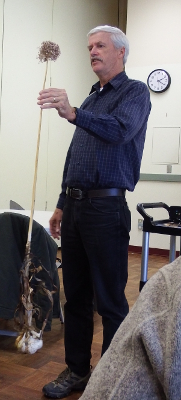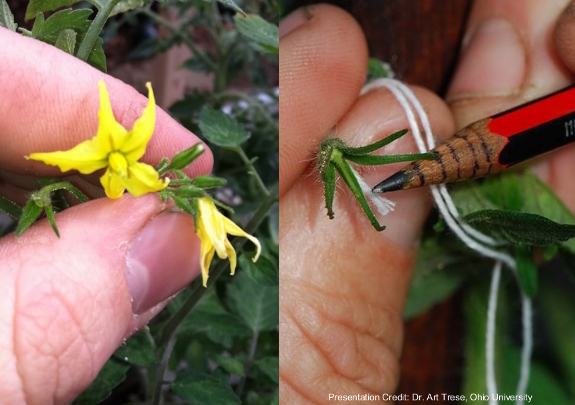
Hacking hybrids
 While
Mary
Nally's talk was a wake-up call about what the law tells us we can and
can't do regarding seeds, Ohio University professor
Art Trese's contribution to last weekend's workshop involved what he
calls "hacking hybrids" --- tweaking store-bought seeds to create even
better varieties for your own personal use or even to sell.
While
Mary
Nally's talk was a wake-up call about what the law tells us we can and
can't do regarding seeds, Ohio University professor
Art Trese's contribution to last weekend's workshop involved what he
calls "hacking hybrids" --- tweaking store-bought seeds to create even
better varieties for your own personal use or even to sell.
Having fallen in love
with a few hybrid varieties that stopped being available over the
years, I can definitely see the appeal of hacking those hybrids. But
before you get too excited, here are some hybrids you shouldn't bother
trying to hack: onions, beets, carrots, radishes, turnips, and in some
cases broccoli, cauliflower, and cabbage.
Why steer cleer of those
vegetables? Hybrids of the species listed above are created by choosing
mother plants that are naturally unable to create viable pollen, and
that trait is passed down through the mother's line mitochondrially. In
case you slept through biology class, the upshot is --- for the types
of vegetables listed in the previous paragraph, even raising plants all
the way to maturity won't result in any seeds.

You're likely to have
better luck with your hybrid-hacking efforts if you stick to
tomatoes, peppers, and cucurbits, though, since hybrids of these
species are still made in the old-fashioned way (shown above). Of
course, the offspring of a hybrid will be a mish-mash of variability.
But you can breed together the plants with traits you like the most and
keep doing that for seven generations. At that point, you've generally
come up with an open-pollinated variety that will breed true from those
saved seeds.
And can you sell that
new variety on the open market? You sure can! While it's not kosher to
sell a hybrid's offspring, after the second generation you officially
have something new and legally salable. So feel free to de-hybridize
lunchbox peppers and put their seven-times-great-grandchildren on the
open market. I know I'd buy a set!
Want more in-depth information? Browse through our books.
Or explore more posts by date or by subject.
About us: Anna Hess and Mark Hamilton spent over a decade living self-sufficiently in the mountains of Virginia before moving north to start over from scratch in the foothills of Ohio. They've experimented with permaculture, no-till gardening, trailersteading, home-based microbusinesses and much more, writing about their adventures in both blogs and books.
Want to be notified when new comments are posted on this page? Click on the RSS button after you add a comment to subscribe to the comment feed, or simply check the box beside "email replies to me" while writing your comment.
- Remove comment
- Remove comment
